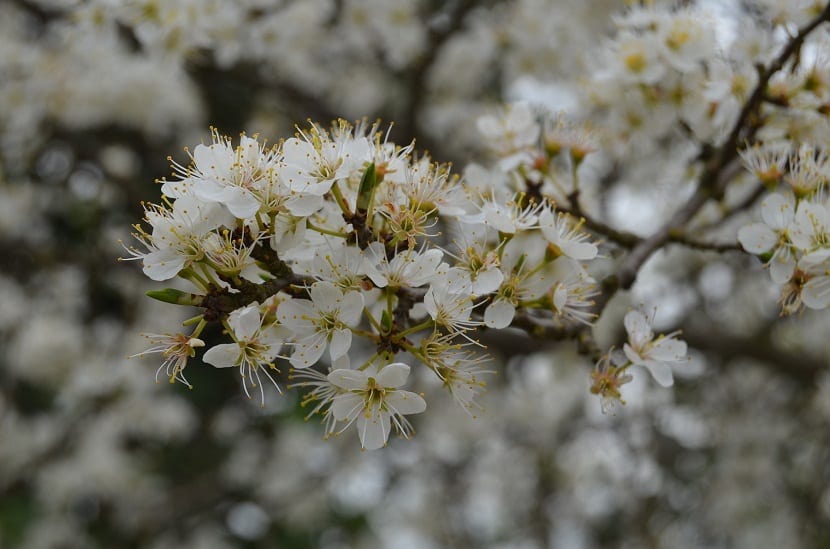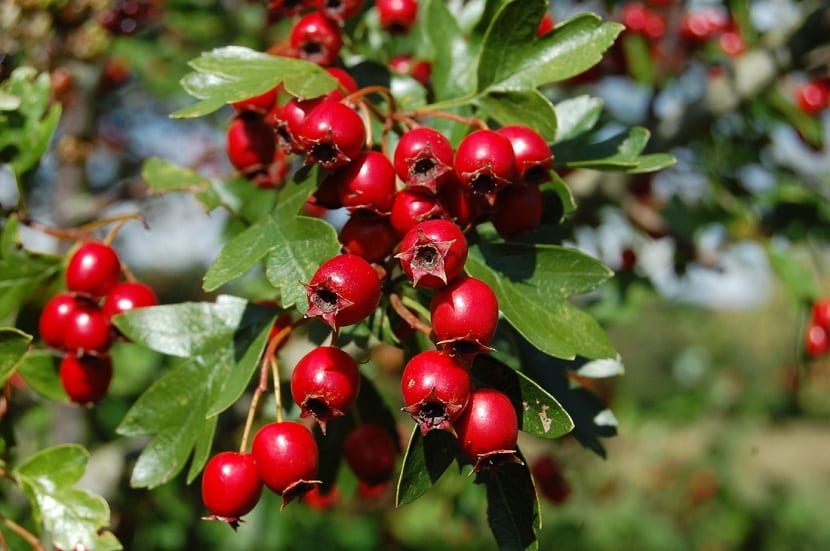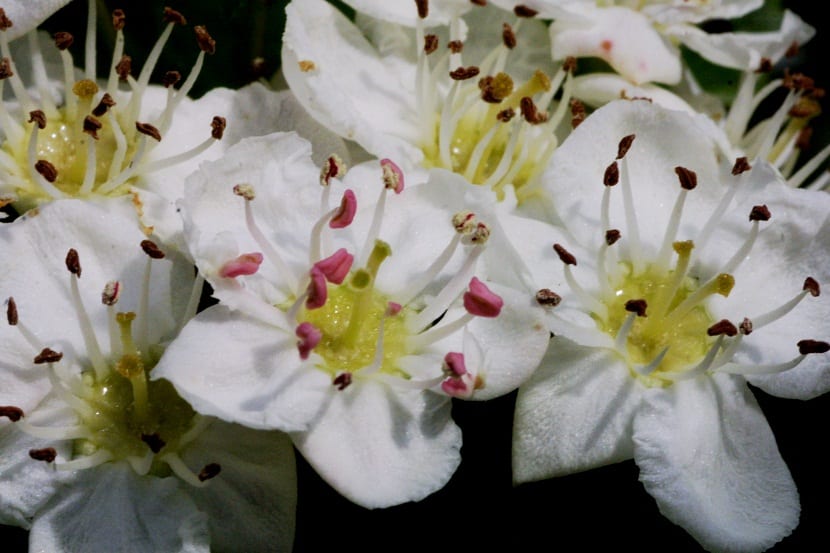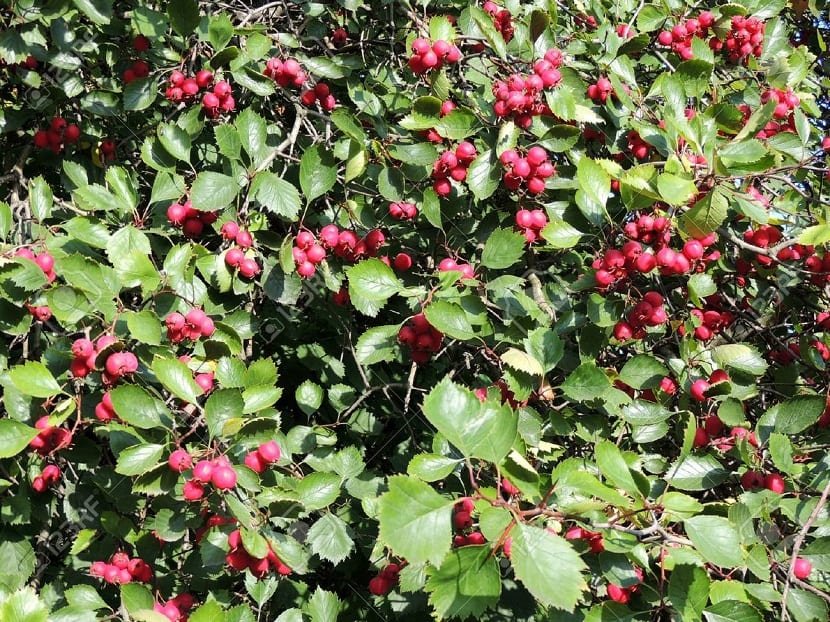
El Crataegus oxyacantha or hawthorn as it is commonly known, is a plant that belongs to the Rosaceae family, which in appropriate conditions it can reach 5 meters in height. Bushy, with thorny branches, green leaves, white flowers and small berries. It thrives in clay and rocky soils.
It is often used to make hedges, this being a plant widely used in both conventional and natural medicineespecially in the treatment of heart conditions. In Europe alone, there are more than two hundred healing preparations made with this plant.
From

El Crataegus oxyyacantha It is a species of the temperate zones of the northern hemisphere of Europe and can occupy large areas of land. It is a shrub widely cultivated in the countries of Europe, although it is also present in North Africa and West Asia.
Features Crataegus oxyacantha
Hawthorn thrives in shrubs and small trees, usually thorny. The bark of young hawthorn branches is light, hence it is also known as hawthorn. Hawthorn leaves are small and lobed from 1 to 3,5 cm, deciduous, dark green on the upper surface of the leaf and bright green on the underside. Smooth-looking blades, ovate in shape, wedge-shaped and divided into three to five lobes toothed, obtuse or sharp at their extremities, their aroma is quite intense.
It bears some small, lobular fruits, of a very bright red color that store the seed inside, which in the species is only one. The flowering of the plant occurs in the spring, The flower is white, very attractive and has five petals, a lower ovary and hard and bony carpels.
Its cultivation and care
Under appropriate climatic conditions for the species, the Crataegus oxyacantha it adjusts to all types of soil, especially clayey and rocky ones, so it does not need a specific pH as is usual in other plants. This shrub thrives faster in loose soils. This plant is frequently seen in low-lying areas. It is a very resistant species that can tolerate temperatures of up to - 18º C, so those people who live in cold places interested in its cultivation, do not have to worry about possible low temperatures, in addition, copes well with sudden drops in temperature.
Regarding light, it can be grown under full light, because the plant thrives very well under any light intensity. Better to plant in soils that have a good ability to keep moist, more in the areas of frequent frosts. Due to its strength, Crataegus oxiyacantha tolerates air pollution.
Its propagation occurs from the seeds that provide its fruits. It is recommended to remove the seeds during the month of October, time of maturation and plantation. This will make the plant germinate more profitably and healthily in the spring season. While it is true that the germination of mature seeds is rapid, the further development of the species can take up to a year.
Uses and benefits

This plant is within the variety of medicinal plants and is used to treat a wide variety of inflammatory-type conditions, but it has been commonly used to treat conditions such as hypertension, ischemic heart disease, congestive heart failure, and arrhythmia. Research has confirmed that it is a safe and reliable plant derivative for cardiovascular disorders such as:
Congestive heart failure
As an antioxidant it reduces the symptoms of heart failure, its action increases blood flow to the heart and the force of the contractions of this, in addition, diminishes the resistance to the blood flow in the extremities.
Angina pectoris
Thanks to its flavonoid content, its action in patients with angina pectoris improves heart function and tolerance to exercise. The flavonoids found in some plants are good heart protectors.
Cardiomyopathy and congestive heart failure
Some studies have determined its effectiveness in treating congestive heart failure. Experts in natural medicine also recommend it for its efficacy and low risk.
Hypertension
Recommended in the treatment of high blood pressure in patients with congestive heart failure in its first stage.
Cardiac arrhythmia
Traditionally has been used to reduce the frequency of arrhythmias. Studies in animals have shown its effectiveness in these, but so far it has not been used in the treatment of arrhythmia in humans.
Valvular murmurs
Among the many advantages that Crataegus offers, a gradual decrease until their total disappearance has been shown in cases of valve murmurs, as well as intense sighing and labored breathing. Its consumption is excellent against aging, to such an extent that experts claim that its use improves life expectancy in elderly patients with conditions such as arteriosclerosis or angina pectoris.
Other uses
Good results have been seen in the treatment of diabetes insipidus, especially in children, a condition that is difficult to control. Young women who suffer from mitral regurgitation, especially if rheumatic diseases are present, they can heal with proper care and proper therapy with the use of the plant.
Cardiovascular diseases can be potentially serious, requiring medical consultation and monitoring. Hence it should be understood that The information in this article is for informational purposes only. Young hawthorn leaves are used for human consumption in the preparation of salads along with other ingredients. Likewise its fruits are edible. Due to its farinaceous texture and flavor, the coating is recommended in the preparation of puree. Hawthorn fruits contain nutrients such as sugars, pectin, and various vitamins, especially vitamin C.
Methods of administration and dosage

Normally it must be administered for prolonged periods because its action to understand and adapt to the physiological processes of the body is slow. Hence, it is observed that the results take time to manifest, although they are durable. There is talk of results that can be observed from approximately 6 or 9 weeks.
As an infusion or hot tea, you can pour two teaspoons of its dried flowers, leaves or berries into a cup of water, once it has boiled it is strained. They can be taken from two to four cups a day. As an infusion or cold tea, two teaspoons of dried berries are poured into a cup of cold water, steeped for approximately 12 hours and finally strained. They can also be taken from two to four cups per day.
Finally, With the tincture prepared with the leaves, flowers or berries of the plant, take 30 to 40 drops, three times a day for the duration of the treatment, then twice a day to preserve the results obtained.